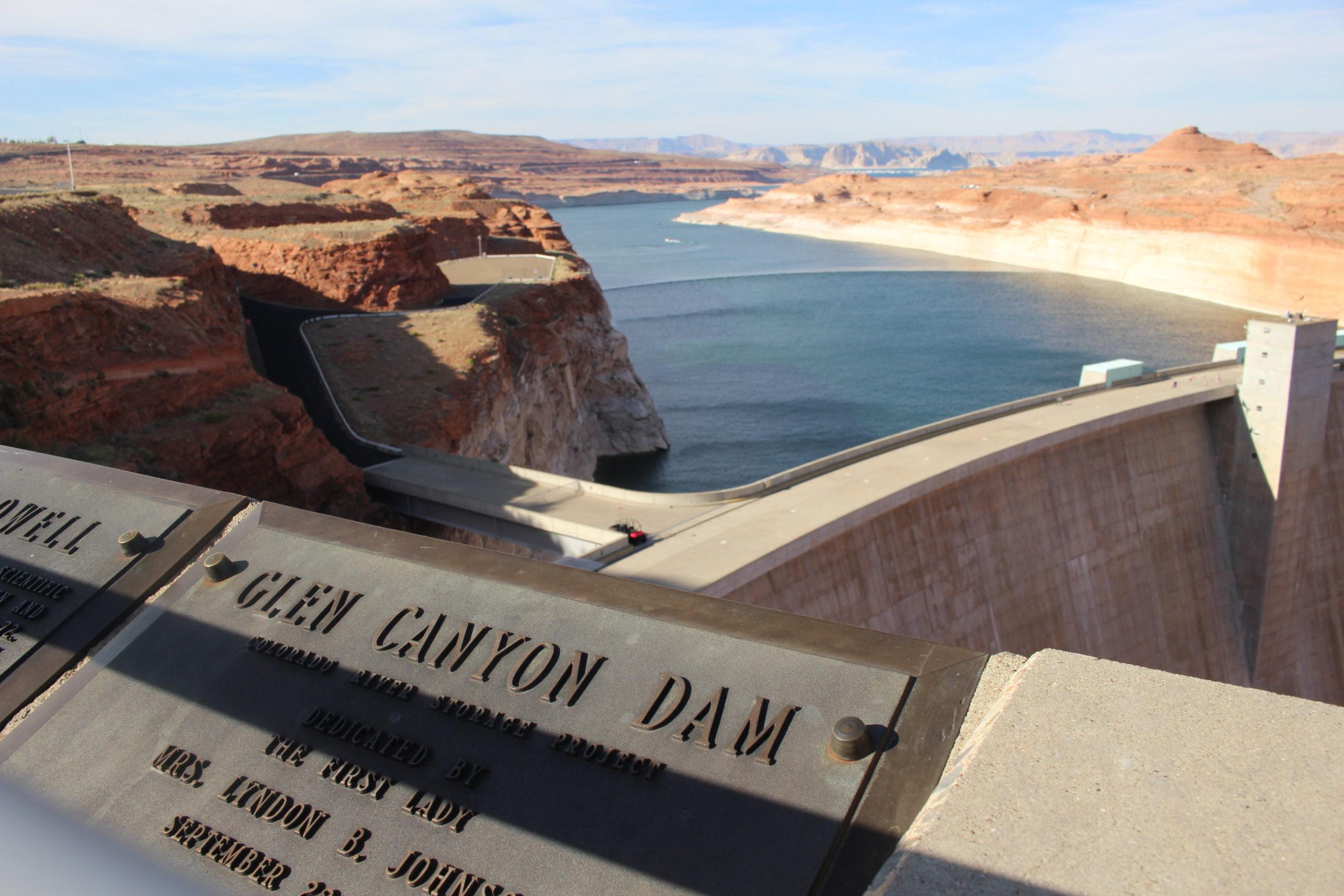With short-term drought plans finished, water managers from across the Southwest recently gathered in Las Vegas to figure out what’s next.
The Colorado River Water Users Association annual conference brings together nearly every municipal water agency, irrigation district, Native American tribe and environmental group that relies on the Colorado River.
In a room the size of an airplane hangar, U.S. Bureau of Reclamation commissioner Brenda Burman took the stage to give attendees a congratulatory pat on the back for the recent completion of Drought Contingency Plans, which dominated discussion at these meetings for five years.
“To all of you in this room, to those of you in the negotiating parties, for those of you who covered for them at home while they had disappeared for months on end, to negotiate, to work, to analyze,” Burman said. “Well done, everyone.”
Her comments were in stark contrast to 2018’s address, where Burman laid out alarming statistics. The river’s two biggest reservoirs—Lakes Mead and Powell—were at their combined lowest point since their inception. Hot and dry weather was breaking records in the basin. And without a plan to take cutbacks to water deliveries earlier, a shortage declaration for the river’s Lower Basin states of Arizona, California and Nevada loomed large.
At last year’s meeting Burman’s message was dire. She urged the river’s users to complete their Drought Contingency Plans, or face the federal government’s regulatory hammer.
With the deals signed earlier this spring, she acknowledged that they’re not a final solution.
“Since completion of the DCPs in May, I recognize that the hard work of implementation has begun,” Burman said.
That now includes the plans’ first true test. Lake Mead, the river’s largest reservoir just outside of Vegas, is still less than half full. Because of that, the drought plan requires users in Arizona, Nevada and Mexico take less water from it in 2020. Though, they’re all already conserving above and beyond what the plan requires.
It’s a different story in the river’s headwaters, where no restrictions were placed on users to take less from the Colorado River and its tributaries. Instead water managers in the river’s Upper Basin states—Colorado, Utah, Wyoming and New Mexico—chose to focus on coordinating reservoir operations, and continuing to invest in weather modification.
Those states also began taking a look at a controversial program that attempts to curb water use in the midst of a crisis. Becky Mitchell, director of the Colorado Water Conservation Board, the state’s top water agency, said completion of the drought plan kicked off a statewide campaign to study the concept and gather feedback.
“That is the beginning. That is not the end,” Mitchell said of the Drought Contingency Plans. “And so that’s the process that we’re in right now, is looking at what’s best for the state of Colorado.”
In theory, a demand management program would pay users to conserve in the midst of a crisis in order to boost the river’s big reservoirs. How it would work, who would participate and how it would be funded are still unanswered questions. Another concern is how to make the program equitable—so it doesn’t burden one user over another.
“So not just on municipal and industrial, not just on agriculture, the environment shouldn’t be harmed in the process,” Mitchell said.
But for all the hand-wringing, the Drought Contingency Plans brought across the basin, it is a temporary fix for the region’s water problems. As one water manager put it during the Vegas conference, “it simply prevents a catastrophe.”
The drought plans expire in six years. They essentially give water managers some disaster insurance while they’re hammering out details of an even tougher deal, set to take effect in 2026. They’re known as the river’s operating guidelines, and they were last signed in 2007.
“We don’t know what the weather will be like in the next couple of decades, but we do know that the warming trend is going to dry the basin out.”
The renegotiation of the guidelines is set to start by the end of 2020. There’s little agreement about whether the new guidelines should be a big, broad response to the realities of climate change or a more conservative, incremental step toward someday solving the river’s long-term imbalances.
“There are some much larger challenges that we need to face,” said Jennifer Pitt, the National Audubon Society’s Colorado River program director. “We don’t know what the weather will be like in the next couple of decades, but we do know that the warming trend is going to dry the basin out.”
(The National Audubon Society receives funding from the Walton Family Foundation, which also supports KUNC’s Colorado River coverage.)
The negotiation over the 2007 guidelines left out key players like Native American tribes and environmental groups, Pitt said. Heading into a new round of talks, she said it’s in the basin’s best interest to have different perspectives at the table.
“You won’t end up with endangered species lawsuits. And you won’t end up with court cases over tribal water rights,” she said. “And so you’ll spend your time at the negotiating table instead of in battle, doing battle somewhere else.”
More voices at the table doesn’t mean the long list of thorny issues needing to be figured out grows any smaller.
A long-standing dispute over who’s responsible in delivering Mexico’s allocation of the river’s water remains unresolved. Chatter about a possible water use cap for the Upper Basin states continues to grow louder. And Upper Basin states want to see the risks of climate change more evenly spread across the basin.
In California, the state with the largest entitlement to Colorado River water, a major sticking point over the last two decades has been the future of the Salton Sea, a huge inland lake that’s shrinking, causing health problems for people and wildlife alike.
“You know what? Sometimes you gotta throw a little rock or two to get people’s attention,” said Tina Shields, water manager for the Imperial Irrigation District—the sprawling expanse of vegetable and hay fields in southern California, and the single largest user of Colorado River water. The district became the lone holdout to the Drought Contingency Plans.
Before they sign onto any future deal, Shields said they want a long-term solution for the ecological disaster playing out in their backyard.
“Moving forward, let’s address the Salton Sea up front, and not make the promises where ‘we’ll get to it, we’ll get to it’ and then we never actually get to it,” she said.
As the district’s farmers grow more efficient and use less water, the Salton Sea, which acts as an agricultural drainage basin, shrinks, exposing toxic beaches and becoming fatal to birds and fish. The district has a well-earned reputation for throwing its weight around on Colorado River issues, and seems prepared to do so during the renegotiation.
The Las Vegas meeting was also buzzing with grand ideas on how best to fix the Colorado River’s long-standing imbalance—where more water exists on paper than in the river itself. To those champing at the bit to get started on new agreements, Bureau of Reclamation commissioner Brenda Burman hit the pause button.
“The simple answer is no,” Burman said. “It’s not yet time to take on that task.”
Instead, the federal government will study how the 2007 guidelines have worked, and use those findings to set the table for the next round of talks, starting in December 2020.
This story is part of a project covering the Colorado River, produced by KUNC and supported through a Walton Family Foundation grant. KUNC is solely responsible for its editorial content.





